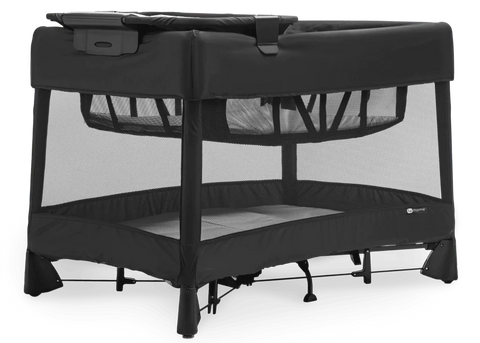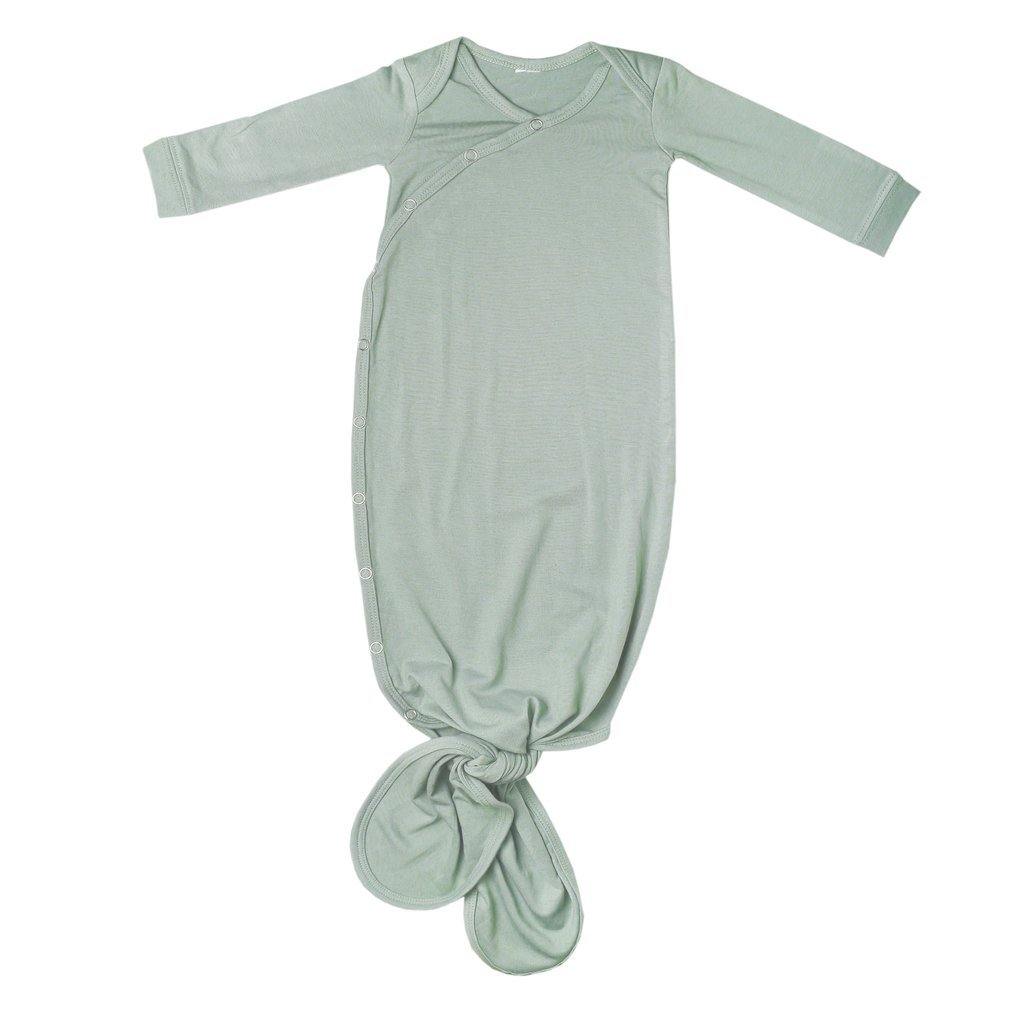Your Guide to Co-Sleeping
Whether or not to co-sleep will be one of the first decisions you will need to make as a new parent. There are benefits and detriments to co-sleeping as you will find when you make your way through the mountains of information on the subject. In this particular guide we will discuss the types of co-sleeping available, pros and cons to co-sleeping, and how to ensure that your child remains safe throughout the night.
YOUR CO-SLEEPING OPTIONS
When you hear about co-sleeping, what often comes to mind is bed-sharing, where baby will sleep in the same bed as the parent. But there are so many other ways to “co-sleep.” Just find the one that is right for you!
1. The Hostile Takeover
This is when the child shares the same bed as their parent(s). It is one of the most common ways to co-sleep, but arguably requires the most thought to ensure the safety of the child...and to ensure that they don’t push you off of the bed in the middle of the night.
2. The Midnight Obstacle
This type of co-sleeping is when the parent installs a separate “bed extender” or even just places a bassinet to the side of their bed. This makes for easy in-and-out of the bed in case of the midnight feedings. However, it does make getting out of the bed a little more difficult.
3. The Roommate
This co-sleeping style is when the parent(s) and child share the same room, but have completely separate beds. Think crib or portable playard (like a Nuna Sena Aire or ) across the room from the parents' bed, or even a cot at the foot of the bed for older children.


4. In Case of Nightmares
This is when a child has a room all to themselves, but they are welcomed into the parents' bed after a night waking or an unsuccessful attempt to get them back to sleep in their own bed.
WHICH CO-SLEEPING METHOD IS BEST?
The way you choose to co-sleep depends on your family situation and your preferences. Many mothers who breastfeed prefer “The Midnight Obstacle” or “The Hostile Takeover” because they allow for easier transfers from bed to breast and back again. Other parents prefer “The Roommate” and “In Case of Nightmares” since it allows for a little more independence between parent and child.
It should be noted that co-sleeping behaviors are often determined by culture. In certain European countries, throughout Asia, and even in South America, co-sleeping is a natural and normal part of infancy and childhood, whereas in the US, co-sleeping is often looked down on.
Why? Because in the US we focus a lot on independence and individuality, whereas in other countries the focus is on connections and the community. What can be your takeaway from this? Co-sleeping is a healthy, normal part of life. No studies have suggested that co-sleeping decreased independence or individuality as compared to non-co-sleepers.
THE PROS AND CONS OF CO-SLEEPING
The benefits of co-sleeping are numerous, with few caveats. Many of the benefits have to do with breastfeeding. Babies who co-sleep with their parents in some way are more likely to be breastfed - and breastfed more often! Why?- When baby becomes hungry they may start squirming and making noise. Since mom is so close it is likely she will hear the child and be able to soothe and nurse them back to sleep before baby fully wakes.
- Breastfeeding lying down is a perfect way for mama's night not to be fully interrupted (and no, it does not lead to more ear infections).
- Mama no longer has to get up and walk across the home in order to get baby to feed! This means more sleeping for mama, too!
- Co-sleeping has shown to produce increased cognitive function and emotional stability in children.
Co-sleeping has also been shown to reduce the risk of SIDS in at least one study. However, it should be noted that they specifically state that co-sleeping should be taken as “sharing a room” rather than “sharing a bed.”
Now for the cons. Just like how the pros have mainly to deal with breastfeeding ease, the cons have to deal with parents needing their own space:
- Some parents may feel like their intimacy cannot get back on track due to always having an “extra” in the room.
- Parents may need a break from baby but feel they can never get one.
- There could be some “hazards” in terms of getting out of bed at night that you will now need to learn to navigate.
- There is a risk of mom or dad feeling like they are at fault if something happens to baby.
Most of these are not huge concerns. However, parents should always take into consideration their personal relationship and their ability to not blame themselves if something does happen to the child while co-sleeping. A parent can literally be doing everything safely and correctly, but something could still happen to the child.
CO-SLEEPING SAFELY
Ah, the part that everyone gets worried about when it comes to co-sleeping: safety. The truth is, there are lots of ways to ensure the safety of your child throughout the night when you are co-sleeping.
However, if you are practicing “The Hostile Takeover” method or the “In Case of Nightmares” you will need to follow some strict guidelines! There are about three main ways that children can be endangered when co-sleeping: entanglement, entrapment, and suffocation.
For all of these, there are some general safety guidelines to follow:
-
Never, ever co-sleep with your child when you are under the influence of drugs that make you drowsy, alcohol, or are overly tired. These will greatly impact your arousal ability if you accidentally roll over too far or baby gets trapped.
-
Baby should always be placed on their back.
-
All surfaces that baby sleeps on should be carefully assessed and made safe for baby.
-
Very small, premature and/or low birth weight babies are at a much greater risk in terms of bed-sharing; however, sharing the same room is a preferred option as they do benefit from the increased interaction.
-
If you smoked while pregnant or are currently smoking, do not sleep with baby as this has been shown to greatly increase the risk of SIDS.
-
Do not swaddle your baby if you are bed-sharing. This could run the risk of baby overheating which is a large risk factor for SIDS.
Many of the safety guidelines pertain to bed-sharing. That is why the preferred recommendation by the American Academy of Pediatrics is that parents share a room, but not a bed. It almost automatically takes care of many of the risk factors associated with co-sleeping while negating few of the benefits.

PREVENTING ENTRAPMENT
In order to prevent your baby from being trapped in any spaces, the first thing you must do is eliminate those spaces as best you can. This means that you must always be conscientious of the surfaces that you are placing baby on and your own stamina for being able to stay up and/or wake up to check on baby.
Some strategies to prevent entrapment include:
- If you are bed-sharing ensure that your mattress is always flush with the headboard.
- Do not sleep with baby on sofas, chairs, couches, etc. If you fall asleep and stop paying attention to baby they could get trapped between the parent and the cushions.
PREVENTING ENTANGLEMENT
Any surface that baby rests on will run pose a risk of entanglement. However, that risk skyrockets when the baby is surrounded by blankets, pillows, stuffed animals, etc. Adult bedding was not created for infants who would be scooting around all night without the ability to pull the bedding away from their face.
Some strategies to prevent entanglement include:
- If bed-sharing, sleep with a lighter, or even separate, blankets.
- If a parent has long hair, their hair should always be tied up tightly to prevent it from being wrapped around baby’s neck.
- Do not place your bed or your infant’s bed near curtains or blinds.
PREVENTING SUFFOCATION
With the above dangers of entanglement and entrapment, suffocation is likely the main cause of death. However, suffocation can happen all on its own from other issues and safety problems.
If the risk of suffocation is something that troubles you immensely, but you still want to co-sleep, consider looking into an Owlet monitor. The Owlet Dream Duo measures oxygen levels and heart rate via a sensor on your baby’s foot and alerts you if they dip below a safe level.
This is by no means a catch-all, but it could put your mind at ease if you are set on co-sleeping.
You should also take the following steps to ensure there is no risk to your baby:
- Overly obese individuals should never bed-share with baby.
- There should never be pillows, stuffed animals, or blankets in or around baby that could potentially cover their face.
-
Baby should always be placed on their back to prevent any airway blocking.
- Try this: lower your chin all the way down until it is touching your chest and breath for 1 minute.
- Do you feel short of breath at all? Was it difficult? Now think about this: you are a full grown adult with a fully developed neck and airway. A newborn’s neck and airway is still developing in some regards.
- If infants are not placed on their backs or are placed in a position where their neck is not elongated and they could run the risk of suffocation.

No matter what you choose for your sleeping arrangements, there are going to be pros, cons, and safety steps you will need to take into consideration. However, there are a lot of benefits that come from co-sleeping with your children. They may feel safer, more secure, and more ready to meet the world each morning.





